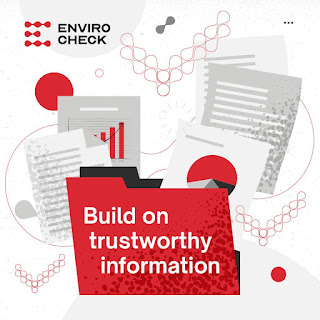Mold Inspection - When You Want To Ensure The Structural Integrity!
Mold may seem like a minor inconvenience, but when left unchecked, it can evolve into a significant threat to your property's structural integrity and your health. Mold thrives in moist, humid environments and can spread quickly, compromising not only the appearance of your property but also the safety and durability of its structure. A thorough mold inspection Orange County is crucial to safeguard your home or building and maintain its value. Let’s delve deeper into the importance of mold inspections and how they play a vital role in preserving structural integrity.
What is a Mold Inspection?
A mold inspection is a comprehensive assessment of
your property to detect the presence of mold. This process involves identifying
areas of existing mold growth, determining the sources of moisture that
contribute to it, and assessing the extent of the infestation. Inspections are
typically conducted by certified professionals who use specialized tools and
techniques to ensure accuracy.
Steps in a Mold Inspection
1. Visual Assessment: The inspector examines the property for visible signs of mold, such as
discoloration on walls, ceilings, or floors.
2. Moisture Detection: Mold thrives in damp areas, so the inspector uses moisture meters or
thermal imaging cameras to identify areas with high moisture levels.
3. Air Quality Testing: Air samples are taken to measure the concentration of mold spores,
which helps in determining if there’s hidden mold growth.
4. Surface Sampling: Samples of suspected mold are collected for laboratory testing to
identify the specific type of mold present.
5. Comprehensive Report: The inspector provides a detailed report outlining their findings,
including the type and extent of mold growth, affected areas, and
recommendations for remediation.
Signs That You Need a Mold Inspection
It’s crucial to know when to call for a mold
inspection. Common indicators include:
a) Visible Mold Growth: If you notice black, green, or white patches on walls or ceilings,
it’s a clear sign of mold infestation.
b) Musty Odors: A persistent, unpleasant smell often indicates mold growing in hidden
areas like behind walls or under carpets.
c) Water Damage: Leaks, flooding, or condensation can lead to mold growth. Inspect any
area where water damage has occurred.
d) Health Symptoms: Respiratory issues, allergic reactions, or unexplained headaches among
occupants may point to mold contamination.
e) Purchasing a Property: Before investing in a property, a mold inspection ensures you aren’t
inheriting costly problems.
Protecting Your Property with Regular Inspections
Mold inspections are essential for preventing
long-term damage and costly repairs. By identifying mold early, you can:
i.
Preserve
Structural Integrity: Early
detection prevents mold from spreading and causing irreversible damage to the
building’s foundation.
ii.
Avoid
Expensive Repairs:
Remediating minor mold problems is far more cost-effective than addressing
widespread structural damage.
iii.
Maintain
Property Value: Mold infestations can
decrease the market value of a property. Regular inspections and remediation
keep your investment secure.
iv.
Enhance
Indoor Air Quality: Mold
spores can negatively impact air quality, posing health risks. Regular
inspections ensure a safer living or working environment.
Parting Thoughts
Mold inspections are a critical component of property
maintenance. They ensure that your building’s structural integrity remains
uncompromised, your health is protected, and your investment retains its value.
Whether you’re a homeowner, a landlord, or a prospective buyer, scheduling a mold inspection Orange County can
save you from potential headaches and hefty expenses down the line. Remember,
mold may start small, but its consequences can be enormous. Stay vigilant,
address moisture issues promptly, and conduct regular mold inspections to keep
your property safe, sturdy, and secure.




Comments
Post a Comment